Hi everyone. My name is Tanaka, and I am in charge of implementing the interactive music in BABYLON’S FALL.
In this article I would like to talk about the interactive music that we used in the game. Those who are familiar with gaming probably already know what I mean by this, but simply put, “interactive music” is music that shifts and changes naturally in response to the gameplay.
BABYLON’S FALL is a hack and slash game, so gameplay is predicated on the idea that players will play through the same section multiple times. To make sure that they don’t grow tired of the music when hearing the same tracks over and a gain, we aimed to make it interactive, subtly changing depending on what players are doing.
Dungeon Exploration BGM
First, let’s look at the music played while exploring dungeons.
This kind of interactive music is not particularly flashy, but gradually builds in tension as you travel deeper into the dungeon. To achieve this effect, we split the music into multiple layers called “stems”. To explain using an orchestra as an example, the different instrumental sections, such as brass, woodwind, percussion, and strings, would each form their own stem.
The dungeon BGM is split into four different stems, with only one of them playing when the player enters the dungeon. More stems are added to the mix as they explore, increasing to two, then three stems at once and finally transitioning into the full, four stem mix.
The BGM changes a little at a time as you proceed through different parts of the dungeon, so it might be easiest to see this phenomenon in action if you pay attention there. Players who have gone through dungeons several times will probably already have noticed it unconsciously.
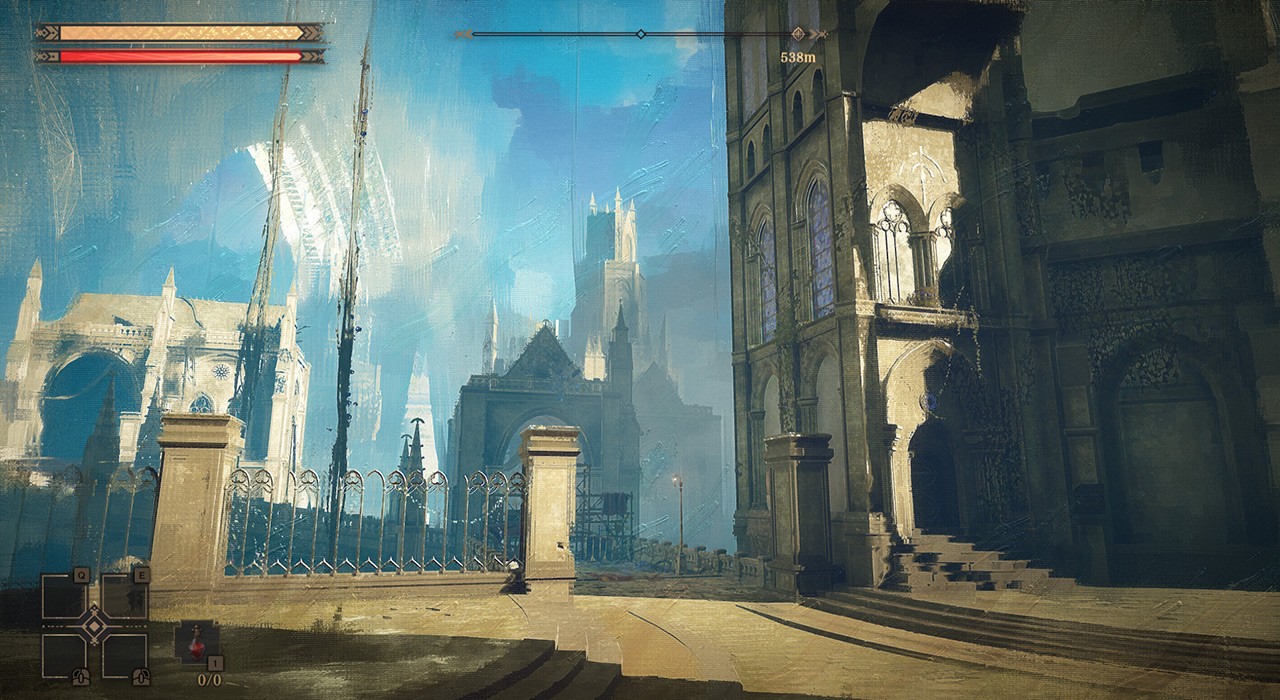
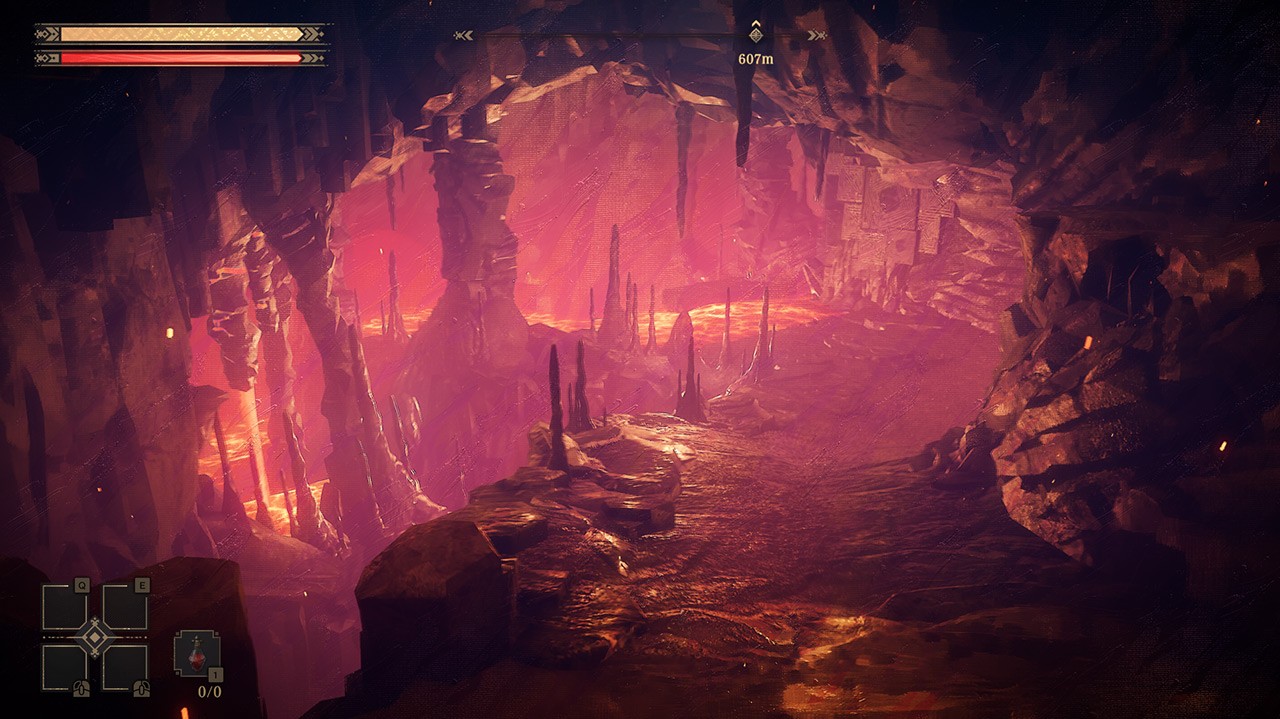
Battle BGM
There is also BGM that plays during the battles in dungeons, and this became the most complex of all the interactive music in BABYLON’S FALL.
The battle music also builds in drama and excitement as you proceed through a dungeon, just like the exploration music does, and we approached it by creating multiple variations from the composition stage. There are a total of six different stages to the music, with the melody ramping up the tension as you progress up through them. In the first battle it will always start at stage one, with the intensity deliberately kept down to let players acclimatise, and as you fight through more encounters, the music will gradually get more frenetic and intense.
There is also variation depending on the type of enemies you are facing, and the music is pushed up to a higher stage of intensity when a formidable foe appears, even if it is the first battle in that dungeon. The system constantly checks the kinds of enemies present through a battle, so changes to the music are made at a higher regularity than just one per battle, with adjustments for each wave (the first set of enemies, the second set etc.). With the music shifting after each group is dispatched, there will always be variety and interest, even if the battle goes on for a long time.
We also created some special sets in addition to the basic six intensity stages.
For example, a special discordant variation on the music will kick in when a player takes damage and is knocked down. It is a simple device, but I think it works well as an easy-to-understand cue that you are in a perilous situation. This also means that players’ motivation to fight on will be roused even higher if their felled comrade manages to recover from being incapacitated, as it returns to the standard music pattern.
Occasionally you will encounter rare enemies that drop valuable items, and there is also a special variation used for that situation. You must defeat the enemy quickly before it escapes with the loot, so the music will shift yet again once you have reduced its HP.
All the variations mentioned above involve playing different stems. They are split into percussion and non-percussion stems and the mix balance between the two is adjusted in real time depending on the distance between the player and the enemy. The full mix will be played while battling in close combat, but it shifts to a more minimal mix in special situations where you are further from the foe. One of the most obvious places to see this in the game is when a gallu opens up with its gatling gun attack at long range and then you rapidly close the distance to attack it, with the music shifting up a gear as you rush in.
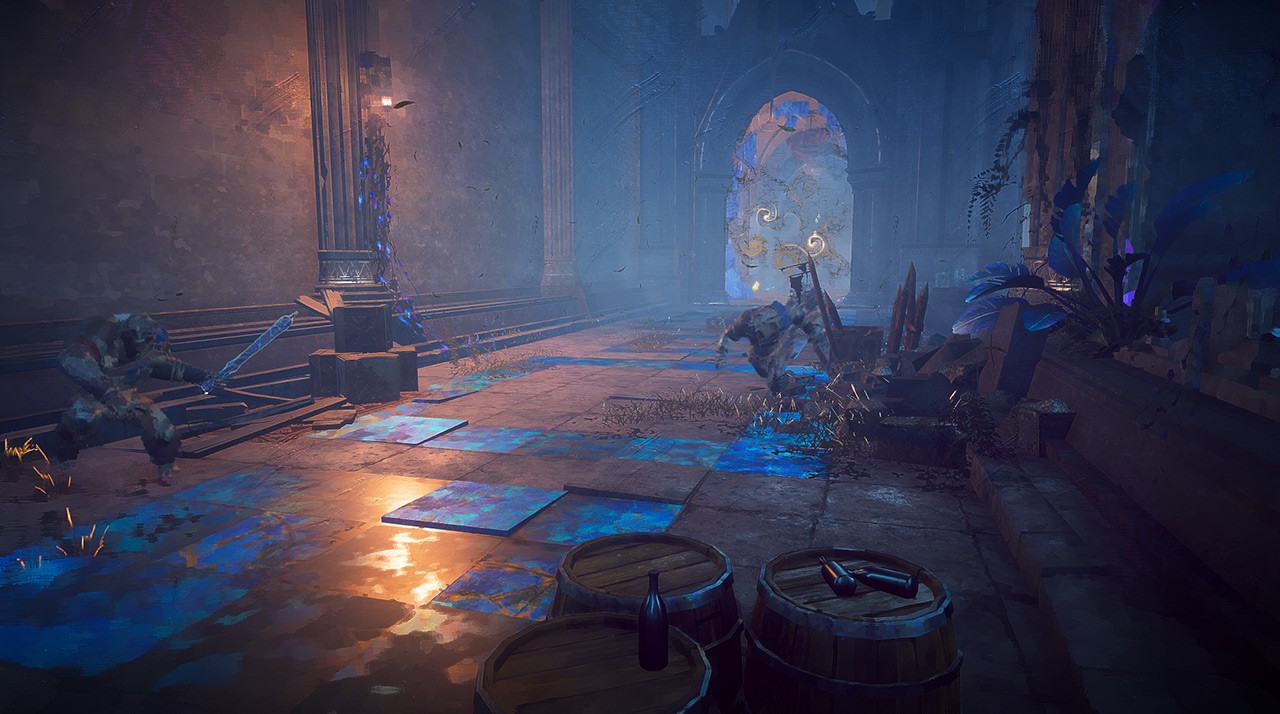
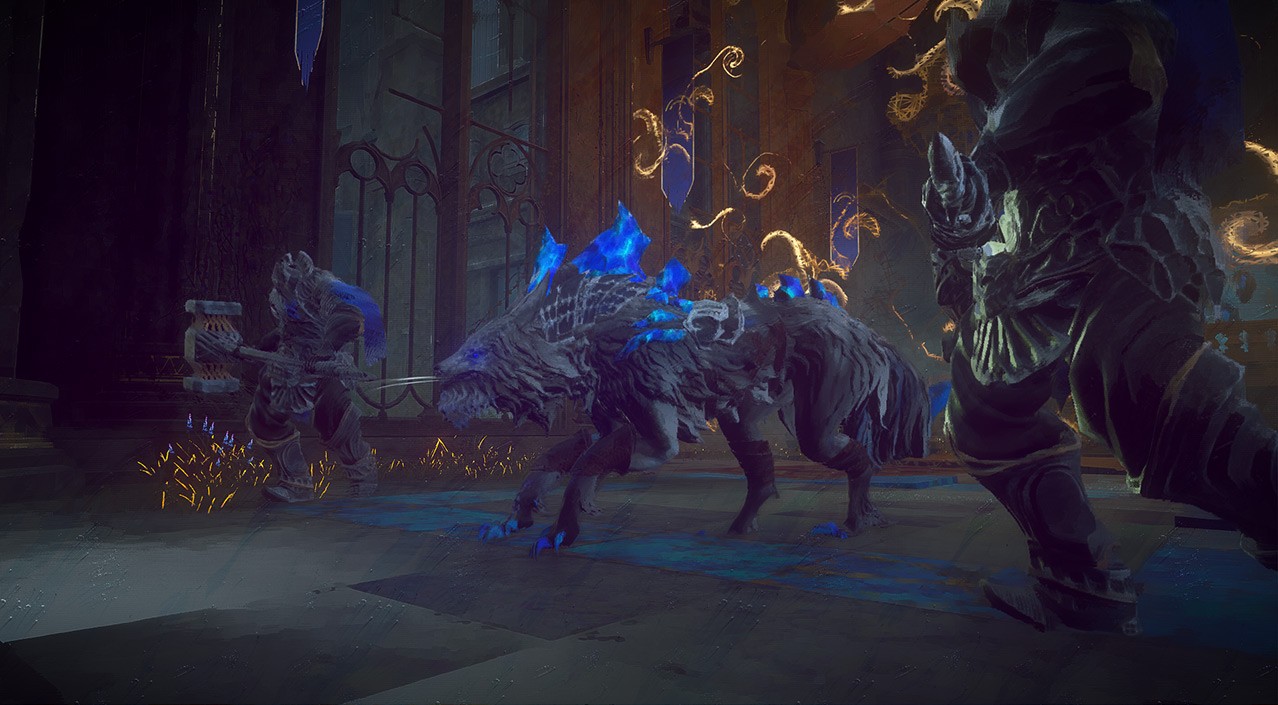
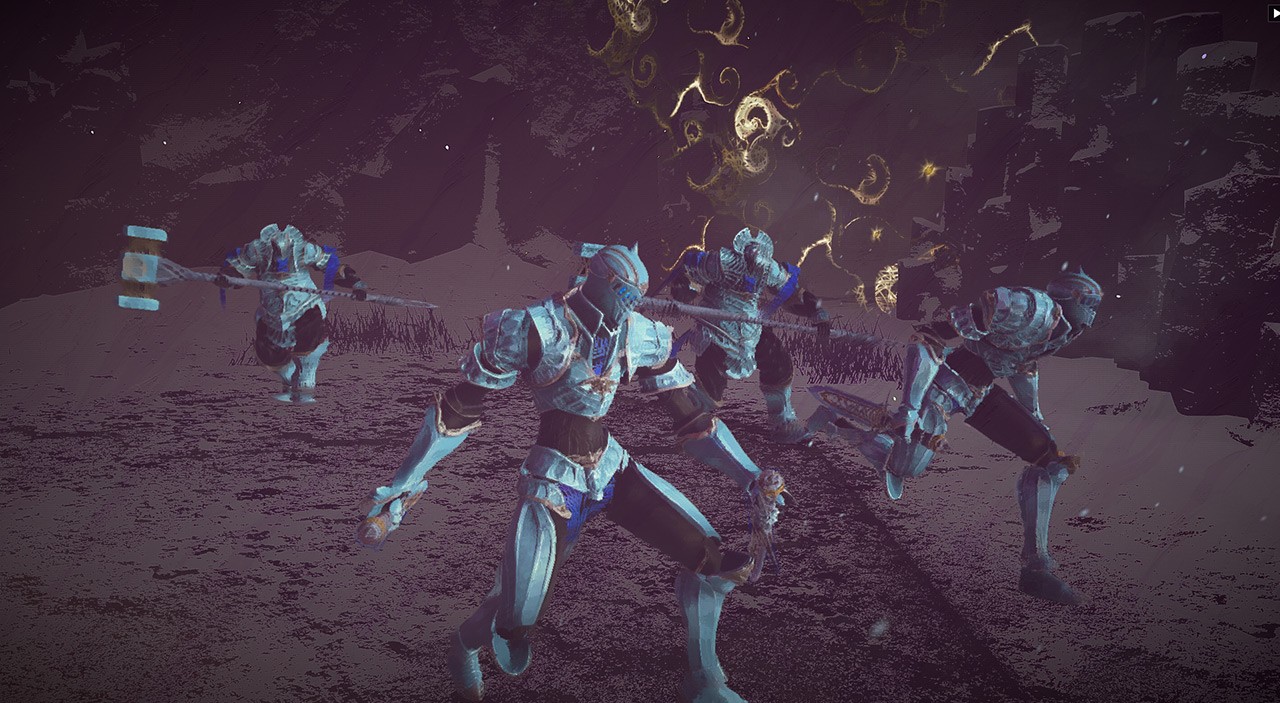
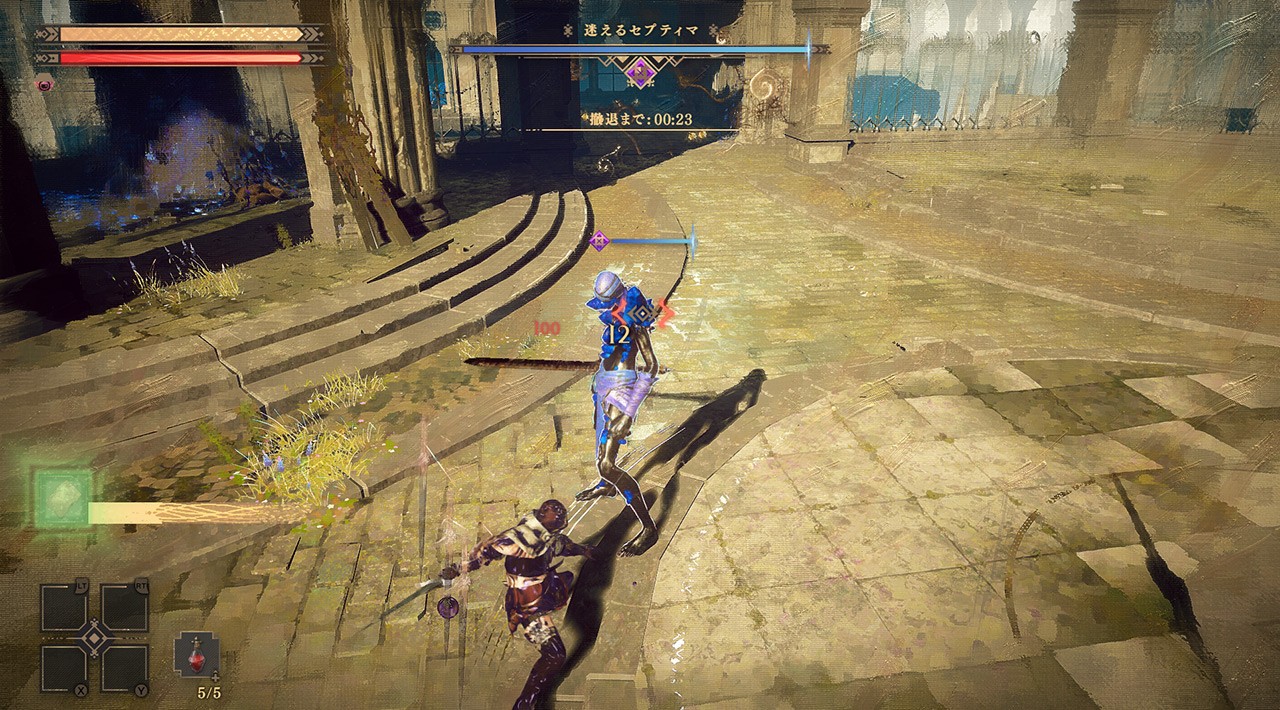
Boss Battle BGM
There are several different tracks played for boss fights. These are selected based on the type of enemy being fought, and each one is a long piece with a three-part construction.
These follow a fairly simple pattern as interactive music, proceeding from part one to part three as the battle plays out. The triggers that move the music on to the next phase are selected on a case-by-case basis, adapted to be optimal for each different boss. The basic principle is that it will shift once the enemy’s health has been worn down by a certain amount, but some bosses will also change form or have cut scenes play during the fight, so it has been set up to change at those points as well.
Moving away from the topic of interactive music slightly, the tone of the middle part (section 2) of the boss fight tracks is deliberately kept slightly reserved and low-key. This is a part of our lead composer, Mr. Yamaguchi’s core music design concept, but I was slightly worried that it would reduce the excitement of the boss fights until I saw it implemented in the game. However, my fears were unfounded. When heard with all the voices and other sounds added in, it felt perfectly in place, and actually created a good variety in the pacing, making the climax in the third section even more effective. It is well worth listening to these outstanding pieces on the BABYLON’S FALL soundtrack if you get the chance.
Once you finally defeat the boss, the music will transition into the fairly long outro section, which has been made to give a feeling of exaltation as if praising the player for battling through a long and arduous fight to claim victory. This kind of outro is a fundamental technique made possible with interactive music and the effect is very difficult to achieve with just a simple fade out.
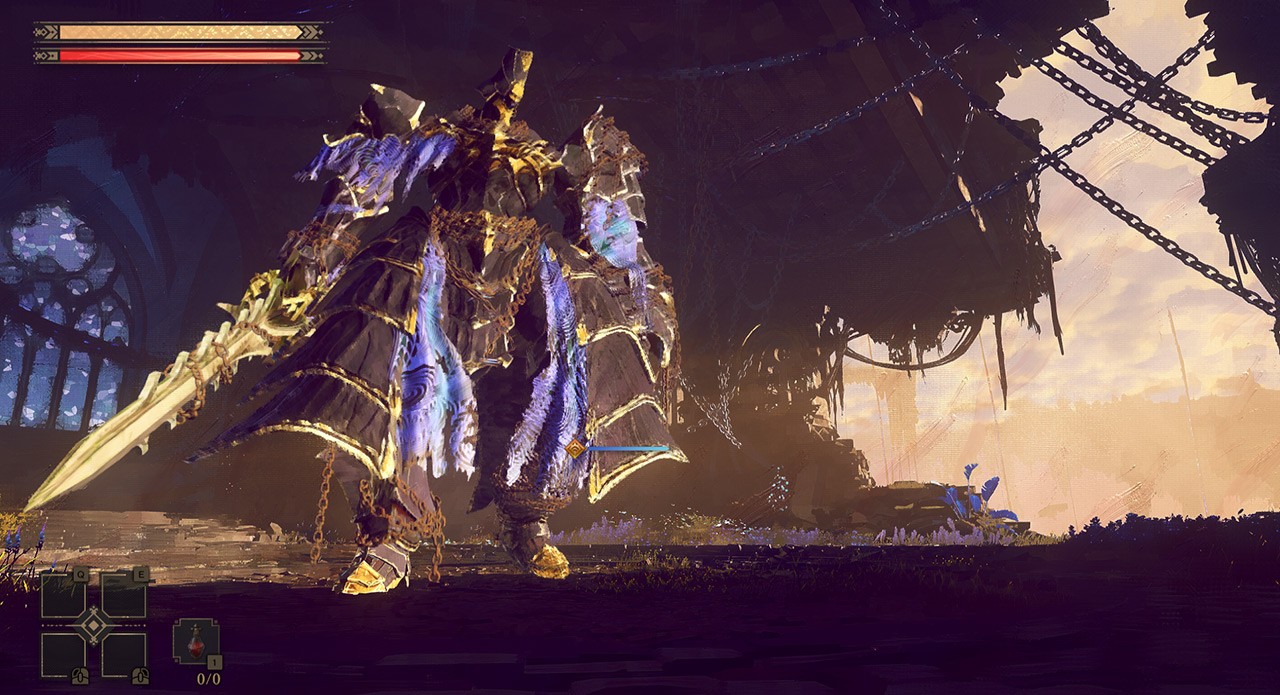
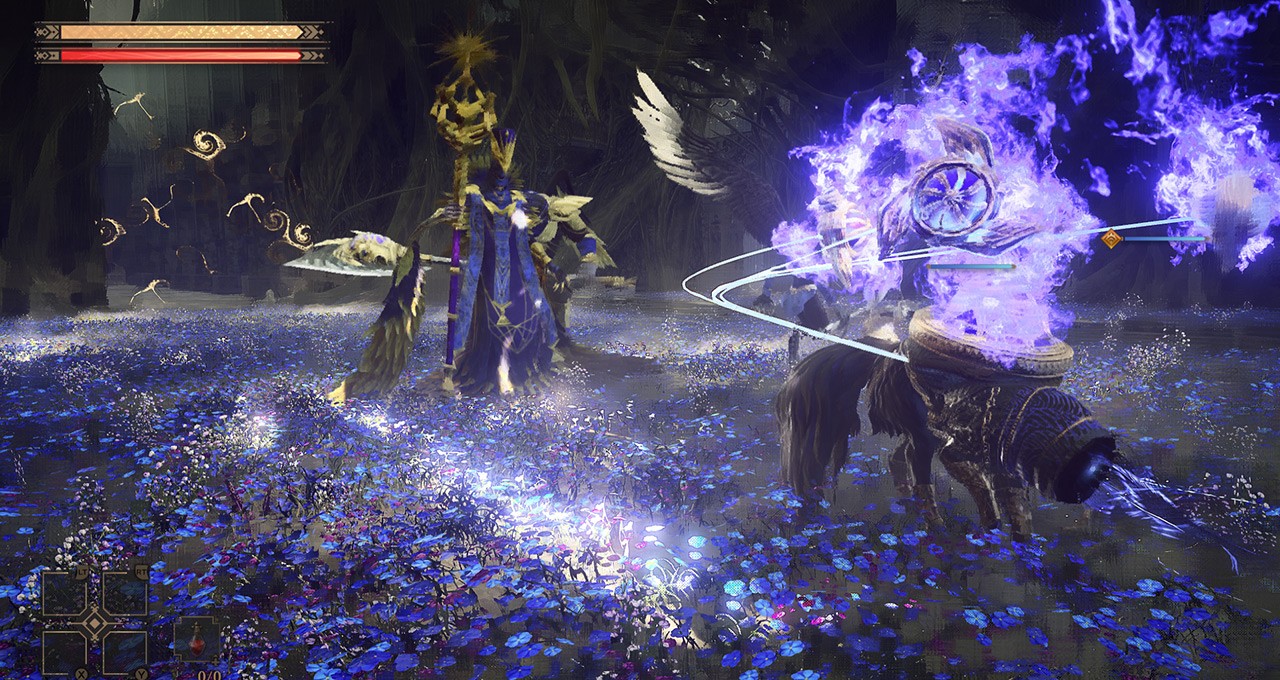
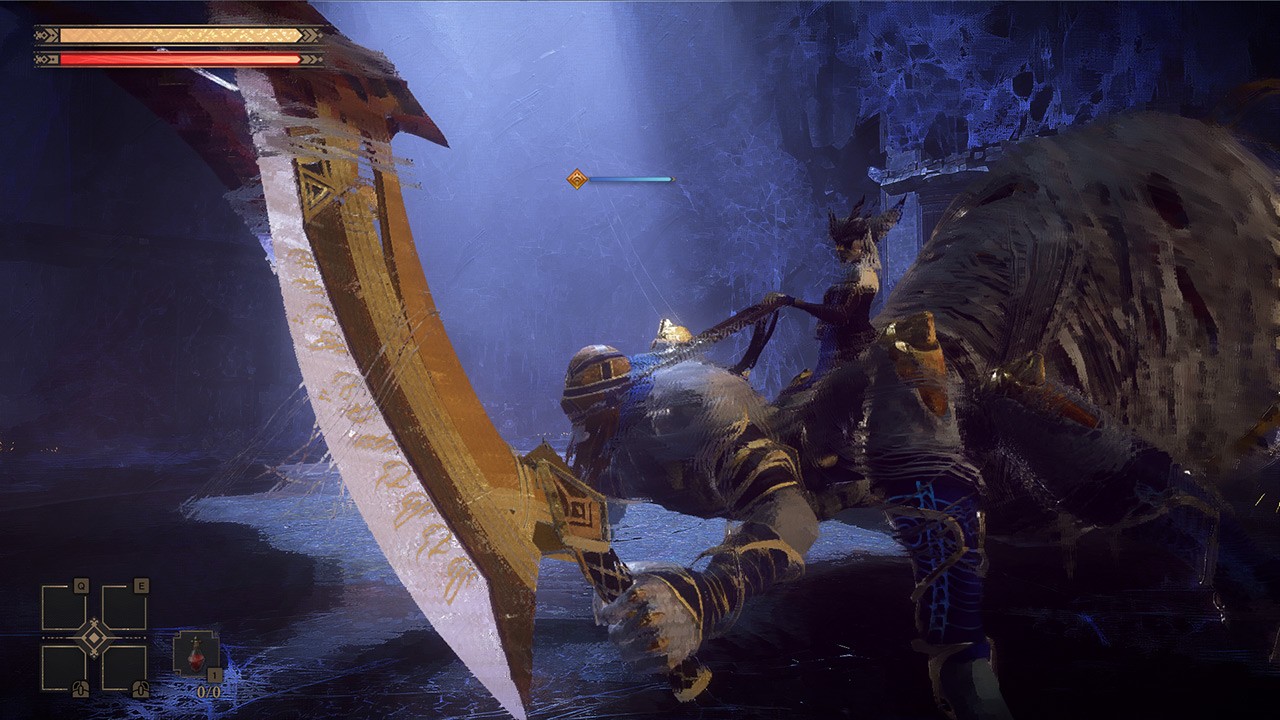
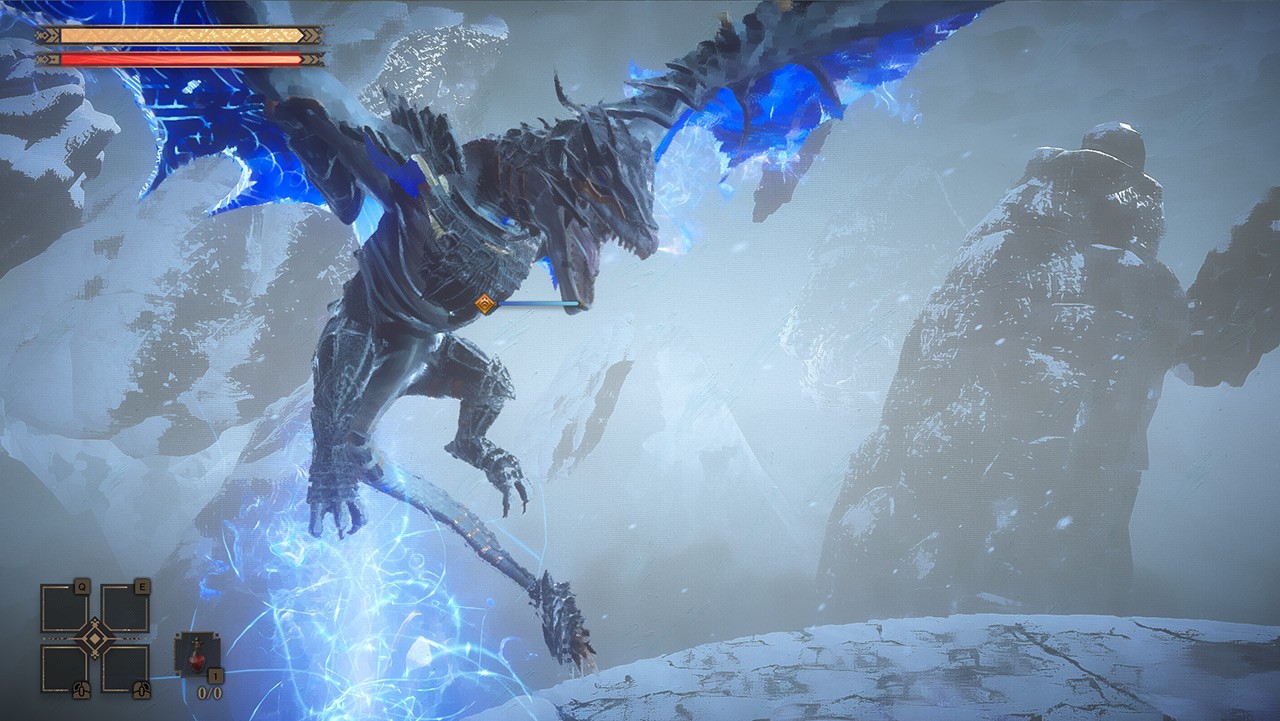
In Conclusion
We looked at various types of interactive music used in the game today, and I hope it has given everyone an idea of the care and attention that the team put into making them.
When I was counting up the amount of data that we created in preparation to write this article, I worked out that the battle BGM (the most complex of the different types) actually has 266 individual variations. This number includes all the different system triggers and possible patterns and makes for a pretty hefty interactive track. This is only the total for the battle music though and there are even more variations in the game overall.
One thing I have learned from my many years involved in creating interactive music, is that while attention is often paid to pieces where the changes are easy to spot, more subtle transitions are also important. Even if it is quite hard to notice the changes when playing through normally, having none at all would make the music too simplistic and easy to tire of, so I place great value in the kinds of interactive pieces that do their work subtly from the shadows, speaking to the subconscious perception of the player without standing out.
I hope everyone enjoys the world of BABYLON’S FALL!
This article is a repost of an article posted on Hanging Garden, a community site dedicated to Babylon’s Fall players, where you can find the latest information about Babylon’s Fall. For more information, please visit Hanging Garden (https://hanging-garden.babylonsfall.com/?lang=en-us).